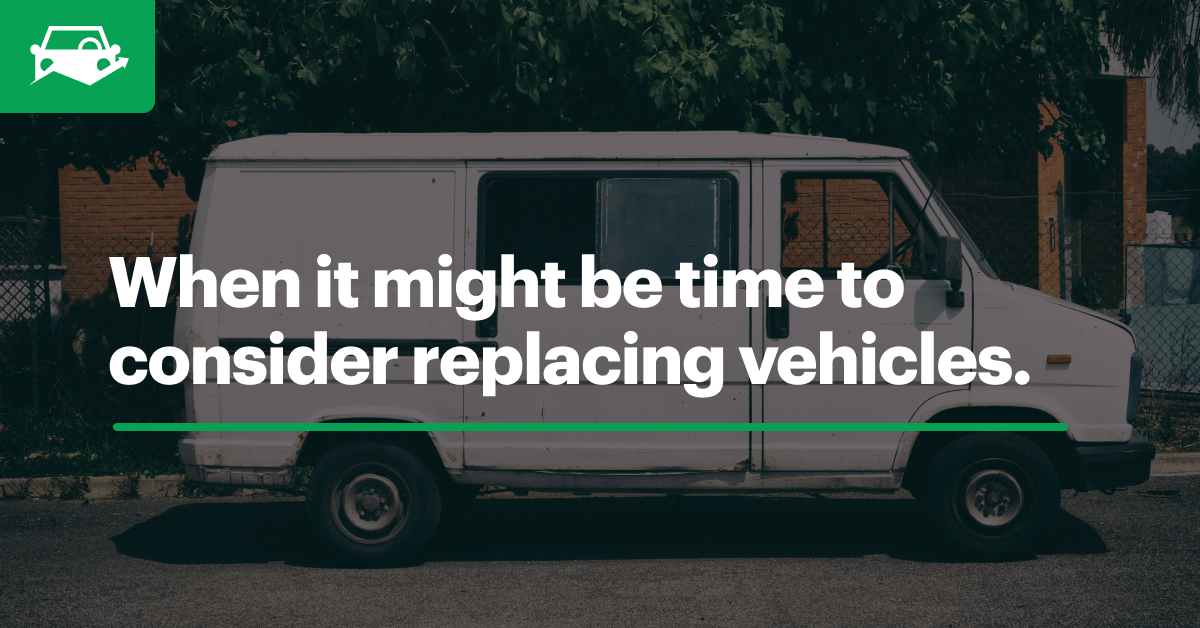With the surge in e-commerce in recent years, there’s been a tremendous rise in opportunity for delivery fleets. While more business is usually a good thing, it means more driving miles, which will take a toll on your vehicles.

By: Tarek Salam, Auto Glass Repair Technician at Auto Glass Pro
Managing Delivery Fleet Maintenance
For delivery vehicles, proper maintenance is key to running smoothly for miles. Without it, the wear and tear of daily use will only lead to problems, leading to delays in delivery. For example, something as small as windshield repair can mean your vehicle is down for a day. It can mean even more downtime when it comes to engine and other system problems.
As a delivery fleet, have you been able to maintain vehicles as you normally would, before the COVID-19 pandemic? Have maintenance needs changed since? These are the questions you need to ask yourself.
Chances are there's been some impact, but you don’t have to wait until your vehicle experiences serious internal problems to troubleshoot. Consider taking a proactive approach to delivery fleet maintenance and look for the following five indicators that suggest it might be time for you to refresh your delivery vehicles.
1. Vehicles Are at or Above 100,000 Miles/Kilometers
Delivery vehciles tend to tally up the odometer pretty quickly. While data for annual distance traveled by delivery fleets varies significantly, it’s estimated that on average a delivery van travels 15,000-18,000 miles or 25,000-30,000 km per year. The distance can take a toll on the vehicles, especially if they aren’t maintained well.
But after a while, as more distance is put on, the vehicle will require maintenance work more often than before. This is typically around the 100,000 mile or km mark and it can drive up your costs for operating the fleet vehicle.
As you add additional mileage, other factors also start to add to your vehicle operating costs, such as fuel: the engine will no longer be as efficient and will consume more fuel.
Rather than running up your operating costs, you are better off getting rid of the vehicle and getting a new one. The cost of investing in a new vehicle may seem like a lot but will end up saving you money in the long run —— especially if you factor in the costs you have to bear due to vehicle downtime for maintenance and breakdowns.
2. Your Vehicles Experience Frequent breakdowns
Unless you run a large delivery operation, chances are you either have a small in-house maintenance department or outsource your maintenance needs. Either way, it means frequent breakdowns will be inconvenient and lead to costly downtime.
If you manage your fleet using fleet maintenance software, you can track maintenance logs and identify trends in vehicle maintenance needs. Most fleets have a maintenance plan centered around time or distance traveled (miles/km), while others automate service programs to receive timely service reminders and notifications. But you can’t always prepare for unplanned maintenance.
Maintenance is required to get the most out of a vehicle, so the maintenance costs are going to be factored into the operating expenses of the organization, unexpected breakdowns can have a tremendous impact on your bottom line.
Aging vehicles have a higher chance of breaking down than newer ones. How they are maintained and driven also factors into the equation. But no delivery fleet can expect to turn a profit with vehicles that frequently break down.
Tracking your fleet’s maintenance with fleet maintenance software can help you easily identify and unlock trends in a vehicle’s maintenance needs. If a certain vehicle type, make or model is experiencing similar recurring issues, you can easily identify it within your maintenance dashboard. From there, you can devise a plan to replace those fleet vehicles from another vendor to avoid costly, yet avoidable repairs.
3. You’ve Had the Vehicle in Your Fleet For Years
Warranties are a safeguard for fleets, especially in case of major defects in the vehicle. With warranty coverage, you won’t have to pay for repairs out of pocket, instead the manufacturer’s warranty covers it. The number of warranty years varies from one manufacturer to another but should extend up to around five years.
Once the warranty expires, you put yourself at risk of having to bear additional maintenance expenses on the vehicle by having it on your fleet. Not to mention the fact that you’llhave to pay for major defects and repairs for higher mileage vehicles.
4. Your Vehicles Have Outdated Technology
Newer vehicles are equipped with innovative technology that makes them easier to drive and much safer. It makes no sense to have your drivers use a van from a decade ago when technology such as rear-view backup cameras and GPS navigation systems reduce the chances of delays and accidents. You will also notice your drivers at ease and relaxed when they start to use such technology.
By refreshing your fleet vehicles and introducing such technologies, your drivers can work more efficiently and safely. You can even equip vehicle monitoring systems and telematics devices that track tire pressure, an emergency braking system and diagnostic trouble code (DTC) alerts. Such upgrades will benefit your operation as they will keep you informed, limit major breakdowns and keep your drivers safe.
When upgrading your vehicle, make sure you find a replacement that works for your organization and drivers. You want a blend of technology that makes it easy for you to monitor the vehicle and provides ease and comfort to the driver. Keep in mind that vehicles that are heavily equipped with technology usually cost more initially.
5. Your Drivers Are No Longer Comfortable Driving the Vehicle
A delivery vehicle is only as effective as the person driving it. If the driver is hesitant about driving the vehicle, there’s typically a reason behind the concern. When it comes to driving for hours, comfort is key. Imagine having to drive for hours sitting on a half-torn car seat with springs poking out.
Your driver’s comfort should be a top priority — after all, it’s where they spend the majority of their day. Be sure to talk to them about the condition of their vehicle and if they come to you asking to repair or replace a vehicle, take action immediately.
The Final Word
Deciding to upgrade your fleet is not an easy decision and can seem like a big expense. However, it will end up being beneficial for your organization in the long run.
You'll notice a drop in maintenance expenses, your drivers will be happier and more productive and you'll have the added peace of mind that the vehicle shouldn't breakdown. It is a big step and, as with all similarly important decisions, timing is paramount.
If you have the right fleet management system and processes in place, you should have indicators - like the ones we mentioned - to determine when you need to take action. Only then will you be able to run a successful delivery fleet.
About the Author: Tarek Salam is a Canadian auto glass repair technician with over a decade of experience repairing automotive glass for all makes and models of vehicles in Canada. He owns several businesses, including GZ Auto Glass and Auto Glass Pro.
If you're looking to gain visibility into your delivery fleet and streamline your maintenance workflows, start your free Fleetio trial or request a demo today!




